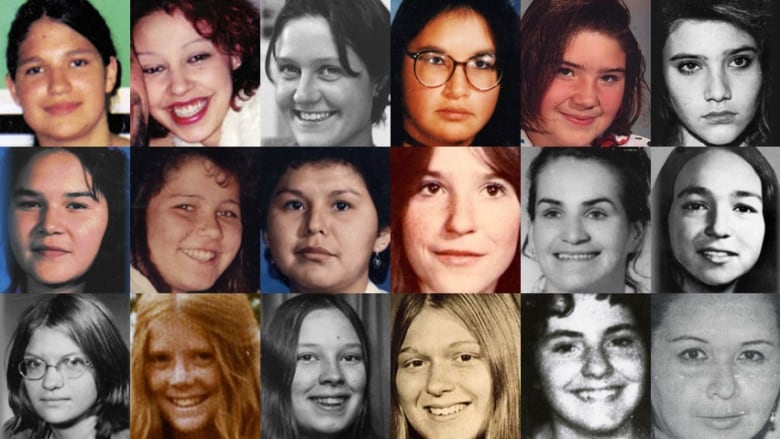Highway of Tears investigation yields 'strong suspects' but no charges
RCMP still investigating deaths and disappearances of 18 women along 3 highways in northern B.C.

The Mountie overseeing the investigation into the murders and disappearances of women and girls along British Columbia's so-called Highway of Tears says his officers have a number of "strong suspects," but they have yet to uncover enough evidence to lay charges nearly two years after the last major break in the case.
- Visit CBC Aboriginal
- Billy Ray reacts to Canada's 1,200 missing aboriginal women
- B.C. pledges to end violence against aboriginal women and girls
Staff-Sgt. Wayne Clary leads project E-PANA, which has spent years investigating the deaths and disappearances of 18 women and girls along three highways in the province's north.
Roughly 60 officers were assigned to the case at the height of the investigation, though Clary said that number has dropped to between 12 and 15, who spend most of their time on the project. Still, he said E-PANA is very much an active investigation.
"It has scaled down, because we've pounded through a lot of work, but there's still enough work in front of us to keep going," Clary told The Canadian Press.
"There's more than one investigation where we have strong suspects or persons of interest, and we're clearly focusing on those. ... I'd like nothing more than to sit down with the families and say, 'We've got the guy."'
Clary declined to offer details about how many suspects the RCMP have identified or in which specific cases, though he said the suspects they have in mind are located in Canada.
The last significant development came in September 2012, when investigators said they believed a dead American convict named Bobby Jack Fowler was responsible for killing as many as three of the women.
The RCMP said investigators had uncovered DNA evidence linking Fowler, who died in an Oregon prison in 2006, to Colleen MacMillen, who was murdered in 1974. They also said they believed Fowler may have been involved in the deaths of Gale Weys and Pamela Darlington, both 19, who were killed in the mid-1970s.
Clary said the force doesn't have the same kind of direct evidence tying Fowler to Weys and Darlington, but he added: "Personally, I think it's him in the other two."
Clary said E-PANA hasn't come up with evidence to suggest any of the other women and girls were linked together, meaning there could be 15 different suspects for the 15 remaining cases.
"If we have a strong suspect, absolutely we're looking for crossed lines, but right now we're not seeing that," he said.
E-PANA was launched in 2005 amid growing concern about the number of women and girls who vanished or were found dead along highways in the province's north. It also came several years after serial killer Robert Pickton was arrested in the Vancouver area a case that Clary worked on as part of Project Evenhanded.
The Highway of Tears often refers to a remote stretch of Highway 16 between Prince Rupert and Prince George, but E-PANA also includes cases along the adjacent Highways 97 and 5.
Investigators identified 18 women and girls who were involved in hitchhiking or other high-risk behaviour and were last seen within a couple of kilometres of those highways. The final list included cases between 1969 and 2006.
Investigators once held annual group meetings, but Clary said they now contact each family individually, either in person or by telephone. Some families have asked not to be contacted unless there is a new development, he said.
Matilda Wilson, whose daughter Ramona is counted among the victims, said the RCMP have dramatically improved their relationship with the families, some of whom complained that their cases weren't taken seriously enough when they were first reported.
Ramona, 16, was last seen alive in June 1994, when she was believed to be hitchhiking. Her body was found 10 months later.
"It's a 20-year-old case and nothing has come up," Wilson said in an interview.
"I can understand where the investigators are coming from, because her body had been laying there for 10 months and there was rain and sleet and snow."
Wilson also praised the RCMP and Clary in particular for keeping her and her family informed. The family holds an annual march in Ramona's honour, which Clary attended earlier this month.
Wilson said she remains hopeful her daughter's killer will be caught.
"There have been cold cases solved after 40 or 50 years and there's always something that technology can bring in," she said.












_(720p).jpg)


 OFFICIAL HD MUSIC VIDEO.jpg)
.jpg)



























































































